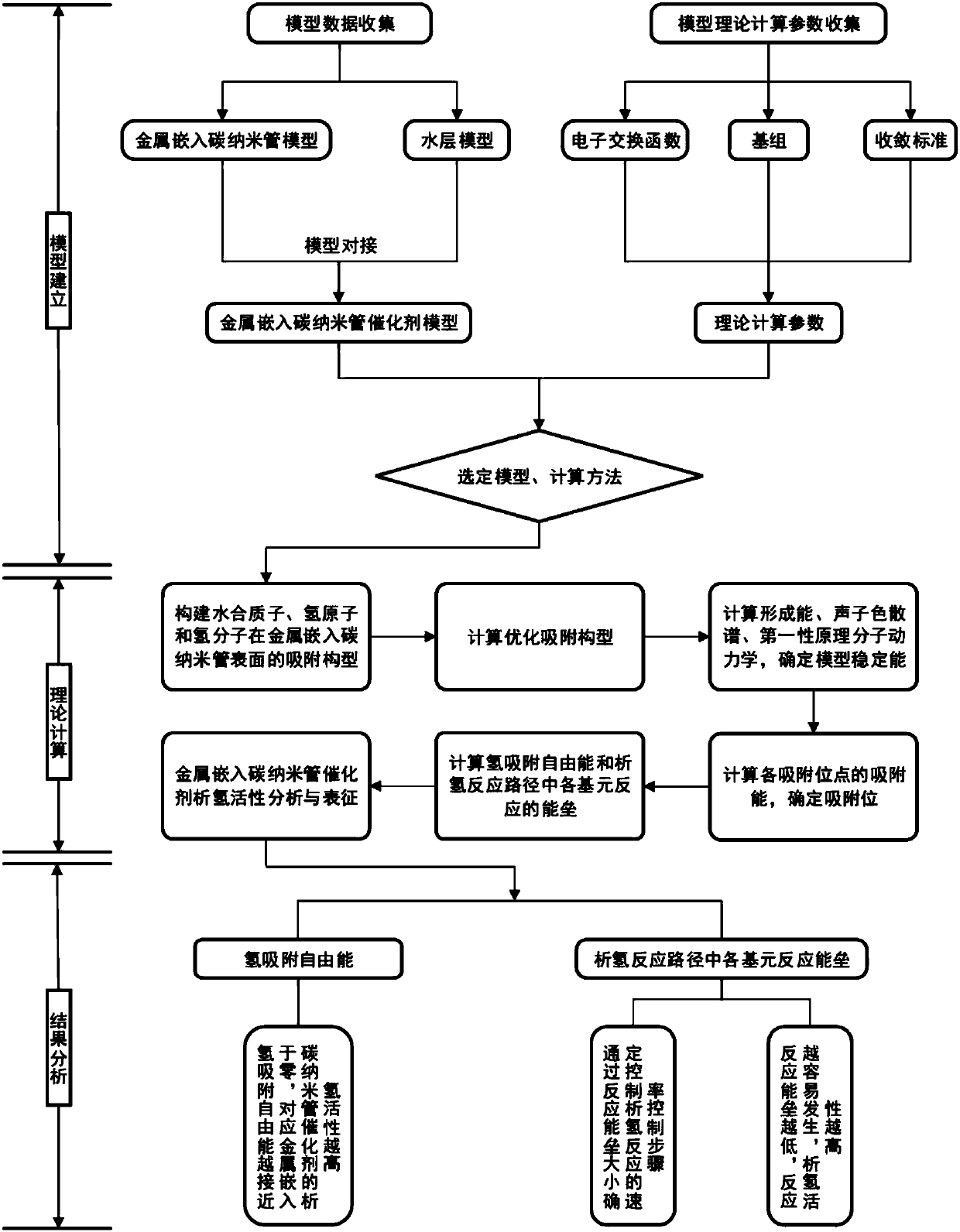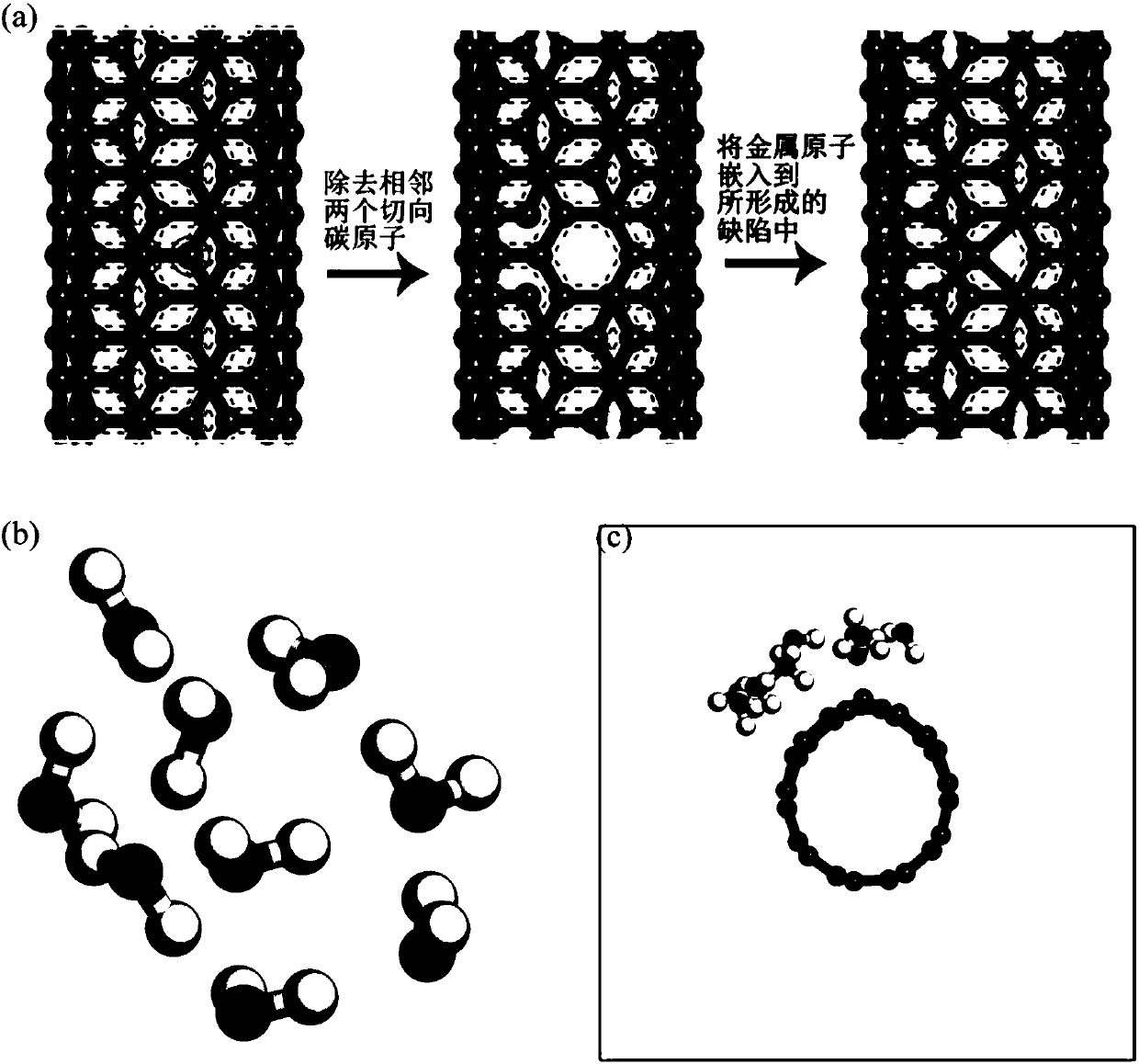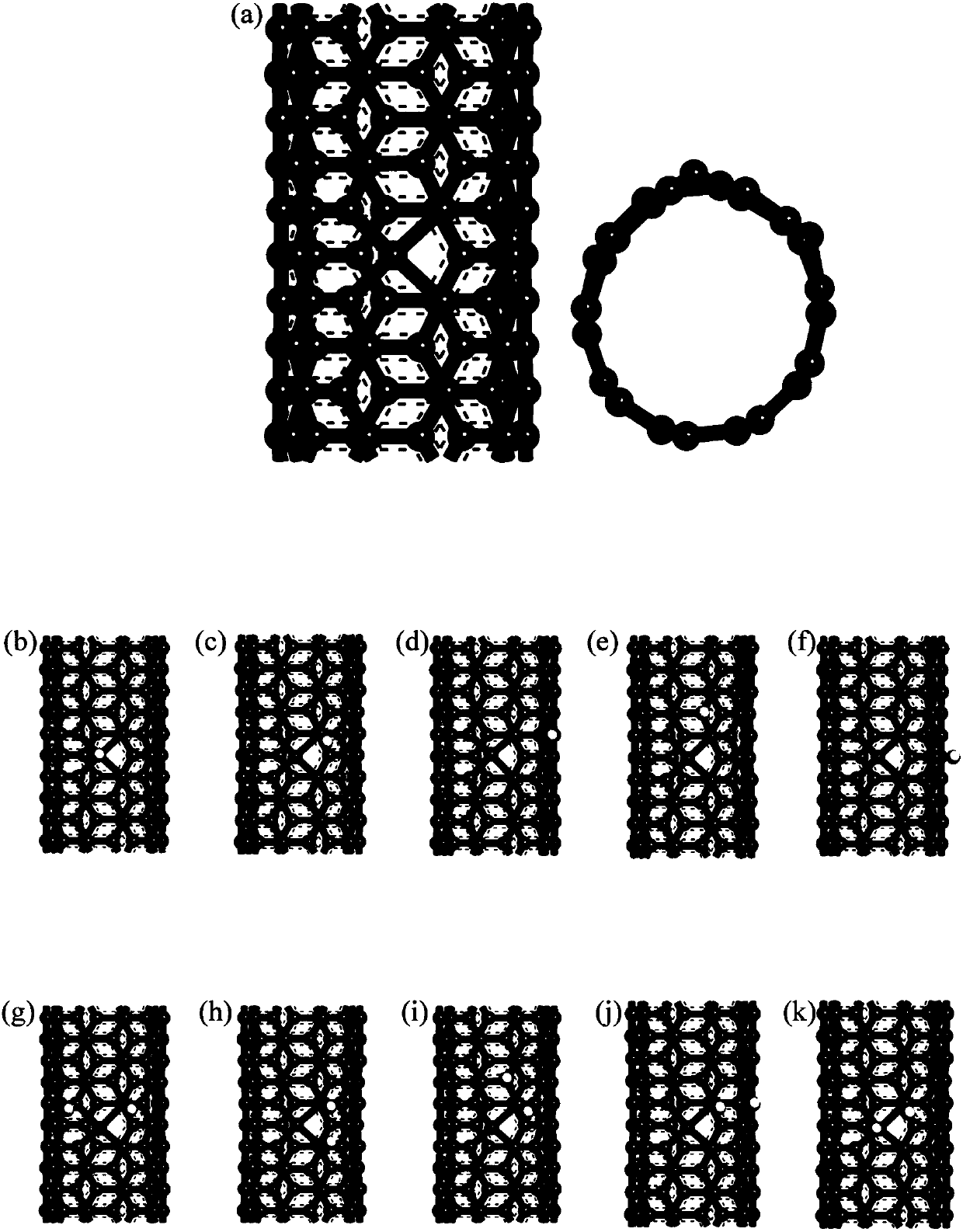Method for quantitatively analyzing hydrogen evolution activity of MCNT catalyst
A carbon nanotube and metal embedding technology, which is applied in chemical informatics, computational theoretical chemistry, special data processing applications, etc., can solve the problem of hydrogen evolution activity measurement of carbon nanotubes without metal embedding, and overcome the hydrogen evolution experimental equipment and corresponding operations. complex effects
- Summary
- Abstract
- Description
- Claims
- Application Information
AI Technical Summary
Problems solved by technology
Method used
Image
Examples
Embodiment 1
[0028] Example 1 Quantitative analysis of hydrogen evolution activity of metal embedded carbon nanotube MnCNT (5,5) catalyst
[0029] (1) MnCNT(5,5) catalyst model construction
[0030] Import the (5,5) type carbon nanotube (CNT(5,5)) model into Material Studio 7.0, and remove two adjacent carbons in the tangential direction of the carbon nanotube based on the CNT(5,5) model Atoms, and then embed Mn atoms in the generated defects to construct a manganese embedded carbon nanotube (MnCNT(5,5)) model, the establishment process is as follows figure 2 (a) shown. In order to fully consider the hydrogen bond interaction between water molecules, establish as figure 2 The water layer model shown in (b), the dotted line in the figure indicates the hydrogen bonding between water molecules. Cover the water layer model completely above the metal center of the MnCNT(5,5) model, complete the docking of the water layer model and the MnCNT(5,5) model, and place the entire model in a vacuum ...
PUM
 Login to View More
Login to View More Abstract
Description
Claims
Application Information
 Login to View More
Login to View More - R&D
- Intellectual Property
- Life Sciences
- Materials
- Tech Scout
- Unparalleled Data Quality
- Higher Quality Content
- 60% Fewer Hallucinations
Browse by: Latest US Patents, China's latest patents, Technical Efficacy Thesaurus, Application Domain, Technology Topic, Popular Technical Reports.
© 2025 PatSnap. All rights reserved.Legal|Privacy policy|Modern Slavery Act Transparency Statement|Sitemap|About US| Contact US: help@patsnap.com



